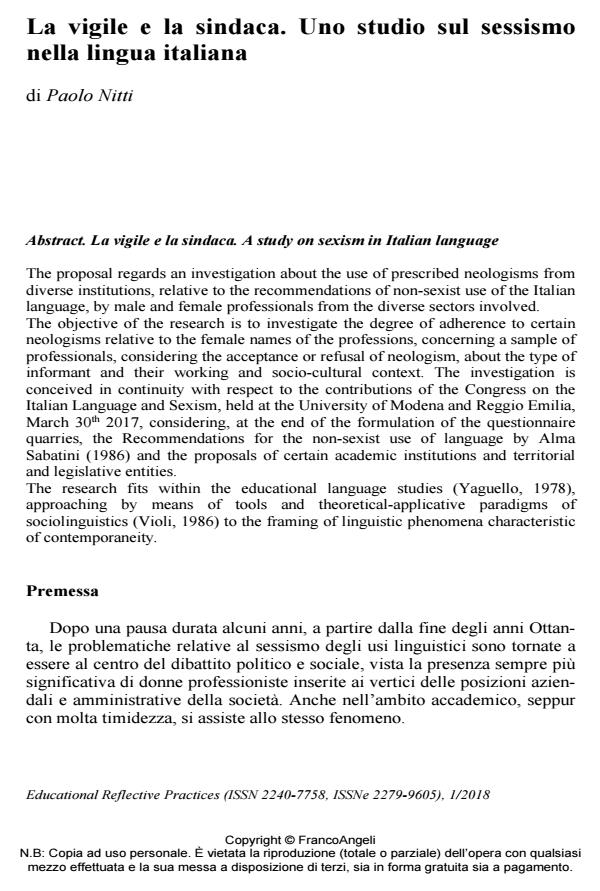Artistic reasons for gender equality and differences
Journal title EDUCATIONAL REFLECTIVE PRACTICES
Author/s Gianni Nuti
Publishing Year 2018 Issue 2018/1
Language Italian Pages 14 P. 108-121 File size 182 KB
DOI 10.3280/ERP2018-001007
DOI is like a bar code for intellectual property: to have more infomation
click here
Below, you can see the article first page
If you want to buy this article in PDF format, you can do it, following the instructions to buy download credits

FrancoAngeli is member of Publishers International Linking Association, Inc (PILA), a not-for-profit association which run the CrossRef service enabling links to and from online scholarly content.
To promote a gender culture that contrasts stereotypes and discriminations it is necessary to acknowledge the need, on the part of everyone, to cultivate two feelings only apparently in antithesis and in reality poles of a single dynamic vector: the sense of belonging on one side and that of distinction, separation from the other. Art escapes from stereotypy, is incompatible with closed and preconceived systems, becomes animated with a free spirit, destabilizing, nourishes divergent thought and therefore, also in the culture of gender, fosters the opening of the mind towards authentic manifestations of one’s identity and at the same time promotes experiences of unity, possibility for many people to identify themselves in a single corpus of aesthetic signs. The contribution brings together some of the possibilities to deepen, under the educational profile, the theme of gender differences through theater, dance, literature, cinema, music, anchoring this excursus to the ontogenetic and phylogenetic roots of human beings
Gianni Nuti, Ragioni artistiche della parità e delle differenze di genere in "EDUCATIONAL REFLECTIVE PRACTICES" 1/2018, pp 108-121, DOI: 10.3280/ERP2018-001007